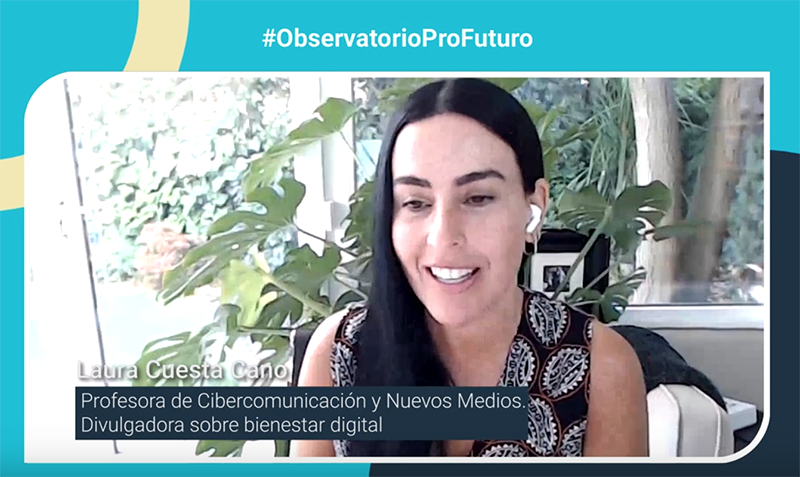How can we ensure that a student’s socio-economic and cultural background does not condition or determine their cognitive level? How do we ensure that the development of our intelligence does not depend on luck? The combination of science and technology seems to be providing a very good answer to these questions in the form of what are called “professional educational tools”.
Professional educational tools: scanners and analysis of the education system
What are professional educational tools? To explain this, let’s jump from education to medicine, a discipline based on evidence and validated tools that allow practitioners to apply this knowledge. If, for example, a doctor today did not have MRIs, clinical analyses or antibiotics, the levels of health that modern societies have would be very different.
The company IteNlearning wanted to transfer this to education. To analyse everything that the different sciences related to human learning (neuroscience, cognitive psychology, epistemology, linguistics, etc.) knew in order to move on to education based on scientific evidence; to organise and structure all this knowledge to make it converge with technology, and to validate it so that everyone can enjoy the possibilities it offers.
Thus, a professional educational tool is an educational technology, equitable and adaptable, validated and based on scientific evidence on how people learn (neuroscience), which will allow each student to build their knowledge in the best way possible, according to their specific needs at any given time, and in an economically viable way.
ProFuturo Mathematics: learning Maths at your brain’s pace
ProFuturo Mathematics is one of these professional educational tools. It has been developed by IteNlearning for ProFuturo and is an education proposal for developing and improving mathematical competence in children from 8 to 12 years old, based on the scientific evidence of neurodevelopmental competence. In other words, it is a tool based on the scientific basis of how the brain learns in the area of mathematics.
The idea dates back to 2017, when ProFuturo was working on the development of its teaching units for students aged 8 to 12. “We decided that in order to contribute to improving the quality of education, we had to focus on mathematics and look for an innovative product with real results,” explains Marina Sanz, head of resources for memorable classroom experiences at ProFuturo. “The decision to go with IteNlearning was made not only because it was a high-quality project, but also because we could take its proposal, based on artificial intelligence, to the environments in which we work, which are often environments without Internet connection and offline, without losing quality.” Thanks to this, ProFuturo Mathematics allows any student, from any school, with or without an internet connection, to have the same learning experience.” And this is key to our goal of supporting the improvement of mathematical competence,” Sanz concludes.
ProFuturo Mathematics Features

What are its main features? Although we have already presented these in the discussion of professional educational tools, we will now look at how these general characteristics apply specifically to ProFuturo Mathematics.
Scientific evidence
ProFuturo Mathematics is based on three types of evidence: scientific evidence, empirical evidence and evidence of learning.
-
- Scientific evidence: the learning experiences that ProFuturo Mathematics provides students with are the best for their neurodevelopment, as they are based on the neuropsychological model and the cognitive model that establish how optimal neurodevelopmental competence is achieved.
- Empirical evidence: ProFuturo Mathematics incorporates a multitude of educational actions with optimal effect sizes (effect sizes are indices that measure the magnitude of a treatment effect). In other words, it incorporates all those actions that have proven to be most effective for learning mathematics. For example, among many others, the setting of learning objectives (each exercise shows what the learning objectives are and their correlation with the curriculum), explicit teaching (there is always an example of an exercise explained, sequenced and practical, with instructions) or self-assessment (after each session questions are included for the student to self-evaluate their performance).
- Evidence of learning: ProFuturo Mathematics has learning analytics systems that allow data to be collected and analysed in real time about the neurodevelopmental state of a student and/or group of students. This provides teachers with objective data that allows them to make the best decisions in order to improve the teaching and learning processes of their students. “If we go back to the example of medicine, what ProFuturo Mathematics provides to a teacher is something similar to what a clinical analysis and scanning system would provide to a doctor. Something that allows you to work with that student, understanding what their needs are and being able to apply them,” explains Ernesto Ferrández, director of IteNlearning.
Validation
The second feature of ProFuturo Mathematics is validation. Professional educational tools must have been validated on three levels: a validation by expert judgement, i.e. specialists who are well acquainted with the cognitive model and the neuropsychological model must ensure that the process of convergence between science and technology has been correctly developed. Secondly, there must be statistical studies that verify that the instrument responds well when applied in different educational settings. Finally, there must be case studies that demonstrate that they have achieved this improvement among students. ProFuturo Mathematics has been validated through its implementation in real school settings with over 100,000 students.
Adaptive learning on three levels
Professional educational tools need to have three distinct and complementary levels of adaptive learning, depending on the needs of the student so that the learning experiences they provide are positive for that person. These levels work in a coordinated and simultaneous manner, enhancing each other, and are as follows:
- Level 1: error handling. It arises thanks to the interaction between the student and the tool, in this case ProFuturo Mathematics, which adapts to the student’s activities based on the results of their work, providing feedback on their weak points, as well as conceptual information that can improve the student’s understanding.
- Level 2: learning and memory curves. The ProFuturo Mathematics system adapts to the pace of development of each student by adapting and creating its work sessions to convert them into different learning opportunities (for example, those that are being presented for the first time, those that have already been presented but are in the process of construction, those that have been acquired but not consolidated, etc.).
- Level 3: intelligent content selection. ProFuturo Mathematics generates the right learning opportunities (content) for the student at each moment, thus optimising the teaching and learning process according to their needs and the curriculum.
Gamified metacognition
ProFuturo Mathematics allows the student to become aware of their own neurodevelopmental process and teaches them to think about their own learning, which will allow them to take control of their own learning process and develop the skill of learning to learn.
Learning analysis
ProFuturo Mathematics provides clear and detailed information on the neurodevelopmental processes and performance of students in real time, providing teachers with objective data that allows them to make the best decisions regarding their students’ learning.
Intelligence cannot be a lottery and the place of birth or the social and economic background of students should not determine their future. Today’s education systems should ensure that this does not happen. However, in some countries, these systems face many difficulties that prevent them from fulfilling their function properly. For example, according to the World Bank, in many countries, children reach the fourth grade without knowing how to subtract two-digit numbers. The 2018 PISA-D (PISA for Development) test shows shocking data: less than 10% achieve minimum proficiency in mathematics (compared to an OECD average of 76% and 71% respectively). Three countries in the world, including Panama and the Dominican Republic, scored so low that a new level, called “Below Level 1”, had to be created. Children therefore go to school, but they don’t learn what they need to learn.
We know mathematics is increasingly important for children to become citizens of this new society. If we want education to be the determining factor in ending extreme poverty, creating opportunities and promoting shared prosperity, we must start offering teaching methods like this one, which make good use of technology and train and prepare our brains to get the most out of mathematics to help all children, regardless of their personal circumstances, to live happily in the society of the future.
The ProFuturo Observatory has dealt extensively with the issue of mathematics teaching and learning. If you want to have a look at the numerous articles we have written on the subject, you will find them complied here.






